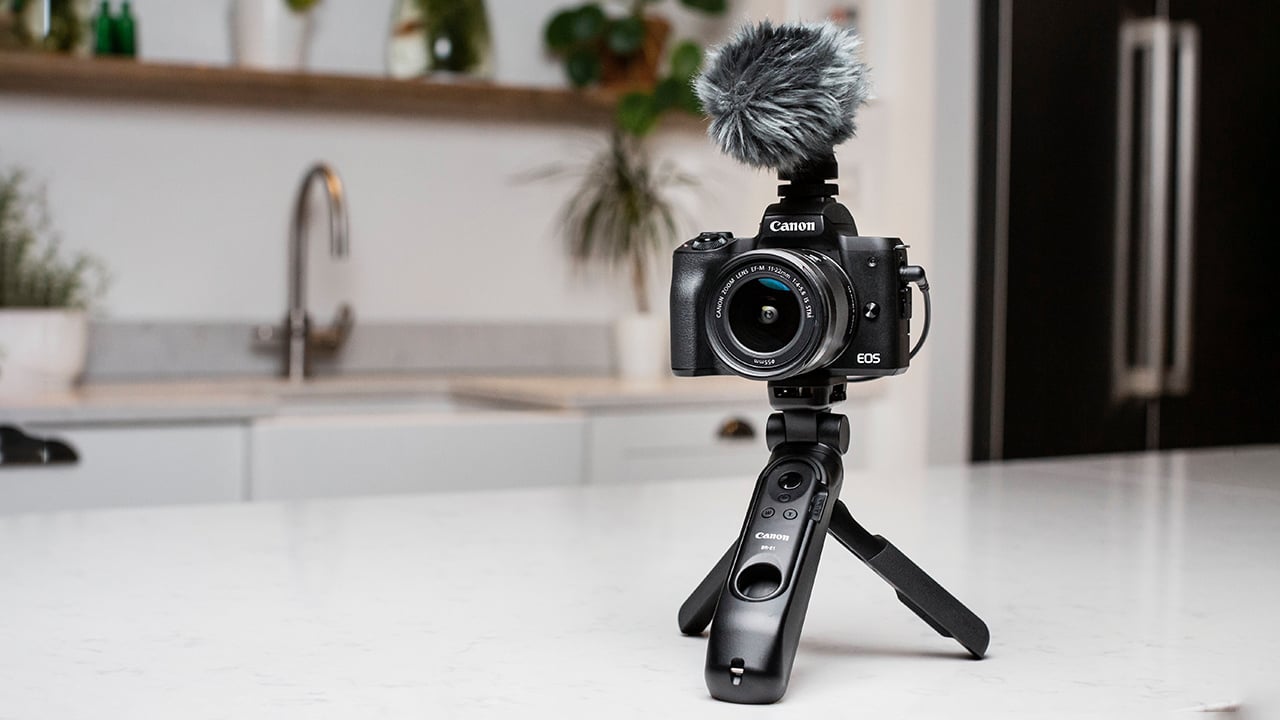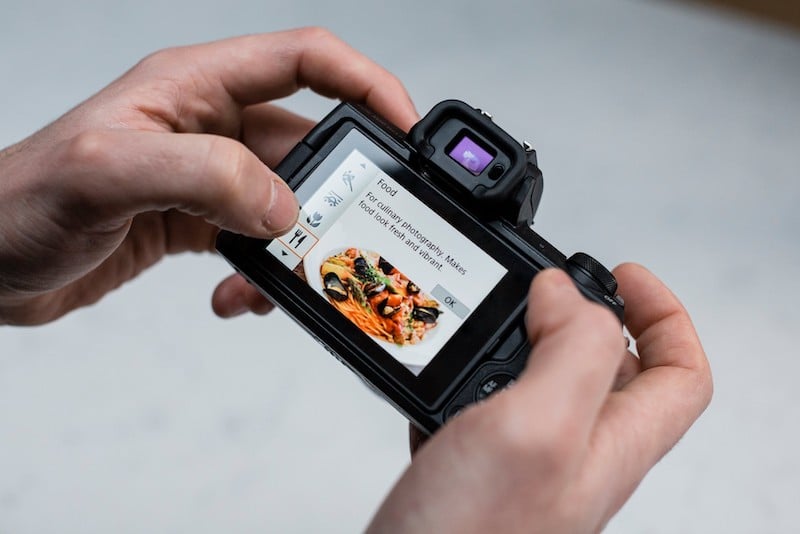
Canon has announced a followup to its successful M50, the appropriately titled EOS M50 Mark II, to meet the demand for social media video.
The compact new EOS M50 Mark II is designed for users who want a fuss free, easy to use camera that allows them to speedily get their footage or images to social media, or to live stream. Reflecting those ideas, the new camera can capture 4K video in both landscape and vertical format, or live stream HD directly to YouTube.
It features a clean HDMI out and a basic 3.5mm mic input, and a three-inch 1.4 million dot vari-angle touch screen monitor. A small OLED EVF also features, with 2.36m dots. The camera has a 24.1MP APS-C sized sensor with an optical low pass filter to reduce aliasing in video. Lens compatibility is via am EF-M mount, with other EF and EF-S lenses being compatible with the use of a mount adapter.
EOS M50 Mark II stabilisation and autofocus
The M50 Mark II does feature stabilisation in-body, but it is performed digitally rather than via sensor shift. Lenses that are compatible with the Dynamic IS system offer even better results. Autofocus is through a phase detection system, although when the camera is in Movie Servo AF mode it reverts to using a contrast detection method. As is par for the course these days, face, eye, and subject tracking recognition is available.
Stills wise the camera is compatible with E-TTL II with EX series Speedlites, and has wireless multi-flash support. X-synch is 1/200th sec, which isn’t the fastest around but is quite respectable for the level of camera this is. The camera can take raw photos at up to 10fps, although the buffer is limited to 36 shots in JPEG and 10 shots in raw in one shot AF mode.

EOS M50 Mark II picture modes. Image: Matt Adlard.
The general market for the M50 Mark II is reflected in the different shooting modes. These have been configured to give the best look right out of the camera for video, so you won’t find any log modes here. However you will find various effects such as soft focus, fish eye, toy camera, smooth skin etc.
Video recording is to an AVC/H.264 compression system, with 4K available up to 25fps and FHD up to 59.94fps. If you drop the resolution down to 1280 x 720 you can record up to 119.9fps.
Conclusions
In all the Canon EOS M50 Mark II is a no frills camera that is designed for users who simply want to get content out there as quickly and as easily as possible. At £589.99/€659.99 this is very clearly a budget offering that will suit those who are getting their first interchangeable lens camera. Although with the EF-M style mount, the question any potential user does need to ask is whether they see themselves upgrading as they progress, in which case it might be worth looking at a system with one of the newer, shallower mount systems.
This isn’t to take away from the M50 Mark II. It is very specifically designed for a particular market and to meet a specific demand, and I’m sure it will find a happy home just as the original did. However any would be purchaser does still need to consider which road they might take further down the line, and with lenses being one of the most important investments you can take with you on your development journey it’s worth taking that into account when making the purchasing decision.
Find out more on the Canon website. The EOS M50 Mark II is available for preorder and will ship at the end of March 2021.
Tags: Production News


Comments